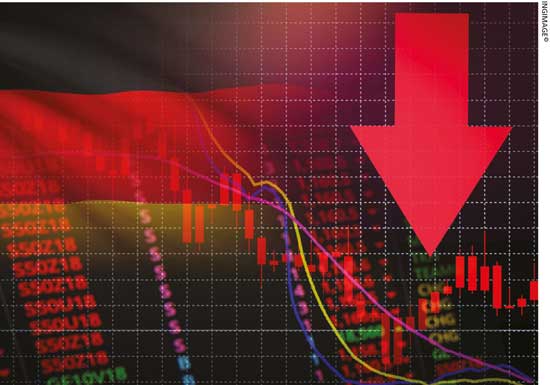FOREWORD
ON A KNIFE EDGE
Sri Lanka’s leading listed entities find themselves in troubled waters
The corporate landscape has forever shifted thanks to COVID-19; and as this edition of the LMD 100 goes into print, the world of work resembles a digital and physically distanced setup. Nevertheless, familiar challenges persist at both the institutional and national level.
Transparency International’s Corruption Perceptions Index (CPI) places Sri Lanka in 93rd spot (up from No. 89 in the previous year) from among 180 countries and territories with a score of 38 out of 100 (on a scale of 0 – or ‘highly corrupt’ – to 100 – i.e. ‘very clean’). This score is no different to where the nation stood back in 2018.
The CPI reflects perceived levels of public sector corruption according to experts and businesspeople. And it concludes that “a majority of countries are showing little to no improvement in tackling corruption … Corruption is more pervasive in countries where big money can flow freely into electoral campaigns and where governments listen only to the voices of wealthy or well-connected individuals.”
To end corruption and restore trust in politics, Transparency International says it is imperative “to prevent opportunities for political corruption and to foster the integrity of political systems.” It recommends managing conflicts of interest, controlling political financing, strengthening electoral integrity, regulating lobbying activities, tackling preferential treatment, empowering citizens, and reinforcing checks and balances.
Speaking on Anti-Corruption Day with a focus on preventing corruption associated with the pandemic to bring about an inclusive recovery, Transparency International Sri Lanka (TISL) Executive Director Nadishani Perera also noted that “a particular area of focus is the proactive disclosure of information on the procurement of COVID-19 vaccines, the quantities ordered, and plans for prioritisation and distribution amongst those on the front lines and vulnerable groups.”
Meanwhile, the South Asia Economic Focus Fall 2020 report of the World Bank expects Sri Lanka’s economy to contract by 6.7 percent in 2020 “with all key drivers of demand affected – exports, private consumption and investment.”
It notes that “the COVID-19 crisis has substantially clouded the outlook and exacerbated an already challenging macroeconomic situation,” while adding: “The current account deficit is expected to remain low (at 2.2% of GDP in 2020) thanks to low oil prices and strict import restrictions, which should largely offset the reduction in receipts from garment exports, tourism and remittances.”
However, with expedited programmes to vaccinate people against the virus in many countries across the globe and related initiatives closer to home, the corporate sector too may envision a more optimistic turn of events in the months ahead.
With regard to the performance of Sri Lanka’s leading listed entities in financial year 2019/20, Hayleys retains the top spot ahead of Commercial Bank of Ceylon (ComBank) on account of its reported consolidated revenue of Rs. 210 billion, which is 40 percent higher than that of the latter.
Meanwhile, LOLC Holdings (LOLC) holds on to the No. 1 slot for profitability, having recorded a post-tax profit of nearly 20 billion rupees.
As for market capitalisation, which is also a prime indicator of corporate might, Ceylon Tobacco Company (CTC) continues to lead the way with an equity value of Rs. 187 billion at 31 March 2020.
Sixty-one LMD 100 corporations reported lower earnings in financial year 2019/20 compared to the preceding 12 months. What’s more, there are 17 loss makers among the 100 leading listed companies (in 2018/19, there were six) while 28 companies (compared to 41 in 2018/19) reported profit upside in the double digits or higher.
In the latest edition of the nation’s pioneering listed company rankings, as many as 72 companies (74 in the prior year) recorded annual revenues in excess of Rs. 10 billion. And in terms of bottom lines, 13 entities (versus 17 in 2018/19) enjoyed post-tax profits of over five billion rupees.
Turning the clock back 25 years when the pioneering rankings were first published in 1993/94 (that was when the LMD 100’s predecessor – The LMD 50 – was compiled for the first time), the list of corporate heavyweights contained 24 entities. These do not feature in the latest edition of Sri Lanka’s leading listed companies. An equal number of corporations were not in contention at the inception of the rankings including the likes of LOLC and Dialog Axiata, which feature on the 2019/20 Leaderboard.
Aggregate revenue of the 50 leading listed entities has grown by a mere two percent in the latest rankings whereas their combined bottom lines dipped by as much as 16 percent. To put things in perspective, back in 1993/94, cumulative revenue rose by 20 percent year on year while profits spiked by a massive 60 percent.
The aggregate asset value of the 50 leaders meanwhile, appreciated by 10 percent during 2019/20 while their combined shareholders’ funds were eight percent higher from when the financial year began.





